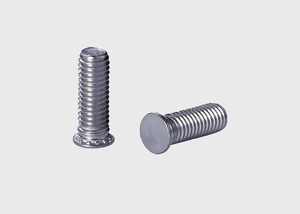Blog Information
- Posted By : haining khfastener
- Posted On : Dec 21, 2020
- Views : 233
- Category : General
- Description : Nuts and screws are things that we often use in our daily lives.
- Location : Haining, Jiaxing, Zhejiang, China
Overview
Nuts and screws are things that we often use in our daily lives. There are many kinds of nuts. Ordinary nuts will automatically loosen or fall off due to some external forces during use. In order to prevent this phenomenon, people invented their own self-tightening nut today. In this way, the function of the nut is clear at a glance, that is, it can resist vibration, loosening and falling off. However, self-tightening nuts are self-clinching fasteners , so naturally there are many types. Let us look at some of them.
Stroke self-tightening nut: The double-lug sealing swimming self-tightening nut specified by GJB 125.1~125.6-86 consists of four parts: sealing cover, self-tightening nut, compression ring and sealing ring. It has a compact structure and reliable sealing. It is suitable for products whose working pressure does not exceed 2atm, working medium is gasoline, kerosene, water or air, and working temperature is -50~100℃. However, there are certain difficulties in the manufacturing process and air tightness testing.
The spring clamp self-tightening nut consists of an S-shaped spring clamp and a self-tightening nut. The S-type spring clamp is provided with a clamping hole (3) for clamping the self-tightening nut, a transition hole for passing through the bolt and a guide hole for guiding the bolt, and the self-tightening nut is located between the springs. nut. Clamping hole and transition hole (4), then clamp in the clamping hole. The utility model adopts a self-tightening nut, which is fixed on a connecting plate or a bracket by the elastic force of a spring clip. The spring clamp is not only an assembly carrier for the self-tightening nut, but also an assembly tool for the self-tightening nut during assembly. This structure is not only easy to install, but also has good reliability after installation.
Of course, there are many other types of self-tightening nuts, and those who are interested can learn more about them.
